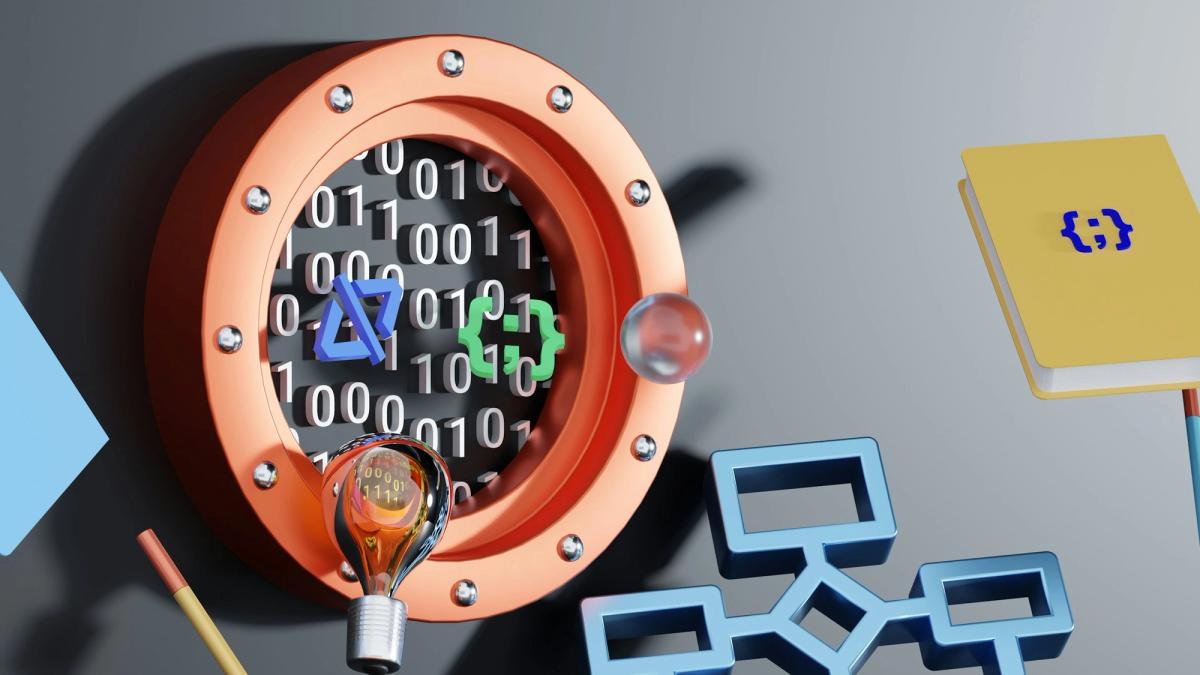10 Expert Tips to Optimize LLM Inference Cost and Scale Smarter
Published on May 19, 2025
Get Started
Fast, scalable, pay-per-token APIs for the top frontier models like DeepSeek V3 and Llama 3.3. Fully OpenAI-compatible. Set up in minutes. Scale forever.
As you scale your LLM applications, you may notice a slow but steady increase in your cloud costs, which is often caused by the booming costs of inference. Inference costs can skyrocket as you serve more users or process more data, whether running a few LLM queries on an isolated instance or running thousands of queries across multiple servers to serve an LLM application in production. The good news is that there are ways to mitigate these costs, and this article will outline a few strategies to help you get started. Additionally, understanding AI Inference vs Training is crucial to optimizing model performance and ensuring smooth deployment.
One solution for addressing inference costs is to use AI inference APIs. These tools can help you run high-performing LLM applications at scale while keeping inference costs low and predictable.
What are the Factors Influencing LLM Inference Costs?

The processing and energy costs associated with Large Language Models (LLMs) like GPT-4, Claude 3.5, and LLAMA are considerable. While I was aware of these costs, I hadn’t fully explored the extent to which the growing use of these tools could significantly impact:
- Energy consumption
- Pollution
- Overall sustainability
The demand for computational power has been rising steadily. Still, AI models, extensive language and vision models, have unique characteristics that introduce distinct costs compared to traditional computing tasks. Before diving into the details, it’s helpful to distinguish between two key categories of AI-related costs.
Cost Type 1 — Training Costs
First, let's discuss the costs associated with training a language model. This process involves unsupervised learning, where neural networks and specialized algorithms analyze vast amounts of text data and “learn” from it. The outcome is a set of parameters, weights, and activations that guide the model in generating text.
These models have grown significantly in size recently. The models we’re focused on today are extensive. Training and hosting these models require thousands of advanced computers and extensive storage. These costs are incurred long before the model receives a request from an external user and begins to fulfill its purpose.
A Familiar Example: ChatGPT and Its Associated Costs
Training a large language model (LLM) is an incredibly resource-intensive process. Take OpenAI's ChatGPT, for example. Training GPT-3, which has 175 billion parameters, required 355 years of single-processor computing time and consumed 284,000 kWh of energy—equivalent to the energy consumption of an average U.S. household over the next 30 years! GPT-4, which powers the latest version of ChatGPT most of us use, is orders of magnitude larger and needs over 50 times more energy to train.
Although the exact numbers remain undisclosed, leaked data suggests GPT-4 consists of eight "mixture of experts" models, each with over 220 billion parameters, totaling more than 1.76 trillion. OpenAI is currently training GPT-5, but only they know how long the process will take and how much hardware and energy will be required to complete the training.
Environmental Impact
Training large models generates significant carbon emissions. For instance, GPT-3 emitted an estimated 552 tCO2eq, equivalent to the emissions produced by 120 passenger cars over a year.
To put that into perspective, your vehicle would make the same carbon emissions over 120 years. If GPT-4 follows similar trends, and with rumors of even larger model sizes for the next generation, the environmental costs of training these models become a growing concern.
Balancing Innovation and Sustainability: The Long-Term Costs of Scaling AI Models
The training costs are not much for something millions of people will use for a long time. And for the potential practical and positive benefits humanity gains from this technology, it’s still worth the energy used.
But how big can the models get before we question that math? Of course, we also have another cost category to consider, which has longer-term implications.
Cost Type 2 — Inference Costs
Usage/query costs are referred to as inference compute costs. Inference, or using the trained model to generate outputs, also incurs substantial costs. Unlike training, these costs are ongoing and scale with increased usage. Inference cost consists of three main components:
- Prompt Cost: The prompt cost is proportional to the length of the prompt. Longer prompts incur higher costs. Optimizing the prompt length is essential to managing expenses effectively.
- Generation Cost: Similar to the prompt cost, the generation cost is proportional to the length of the generated text. The more tokens generated, the higher the cost. This aspect is crucial for applications that require extensive output, as it directly impacts the overall expenditure.
- Fixed Cost per Query: A fixed cost may be associated with each query, regardless of the prompt or generation length. This fixed cost can add up, especially in high-volume applications.
Tokens per Second
A critical metric is the rate at which a model can process or generate tokens.
It affects:
- Real-Time Responsiveness: Applications requiring immediate responses benefit from higher tokens per second.
- Latency: Lower tokens per second typically result in higher latency, hindering user experience.
- Scalability: Models with higher processing rates can handle more concurrent requests, making them suitable for growing user bases.
Accuracy and Model Size
Choosing the right model size is essential for balancing accuracy and cost. More extensive models may provide higher accuracy but come with increased costs. Smaller models can be more efficient for real-time processing, especially in resource-constrained environments.
Customization and Fine-Tuning
Customization is vital for applications needing to understand specific contexts. Training large models can be complex and may lead to unexpected behaviors. Smaller models trained on targeted data can reduce costs and improve performance.
Cost Metrics
Understanding cost metrics is crucial for managing expenses effectively.
Key metrics include:
- Total Length of Prompts and Generated Texts: Measured in tokens, this metric is particularly relevant for proprietary LLMs accessed via commercial APIs.
- End-to-End Latency: The parallelism of LLM calls can affect the time complexity of a single run.
- Peak Memory Usage and Energy Consumption: These metrics provide insights into the resource demands of LLM operations.
Comparison
The training phase incurs a one-time, very high cost of computing and energy. This phase is characterized by the need for massive computational resources over a relatively short period.
Inference Phase
The inference phase incurs ongoing costs that scale with the number of users and the frequency of model usage. While each inference may consume less energy than the training phase, the cumulative cost over time can be substantial, especially for widely used models and services like ChatGPT.
Balancing the Cost of AI Innovation: Training vs. Inference in LLMs
The training phase of large language models like GPT-4 or LLAMA is undeniably costly in compute and energy. The long-term usage phase (inference) can also be expensive, especially as usage grows.
While training is a one-time, high-cost event, inference costs are ongoing and can accumulate, potentially surpassing the initial training costs if the model is heavily used. Given the substantial investment required for training these models, they must be leveraged to their full potential.
Related Reading
- Model Inference
- AI Learning Models
- MLOps Best Practices
- MLOps Architecture
- Machine Learning Best Practices
- AI Infrastructure Ecosystem
How Has Inference Cost Developed and Where Is It Today?

Inference Costs are Rising, Not Falling
In the large language model (LLM) ecosystem, GPUs serve two distinct roles:
- Training
- Inference
For the first 16 months following the launch of GPT-3.5, public and investor attention was focused mainly on training costs, which made headlines due to their extraordinary scale. After the mid-2024 wave of API price reductions, the spotlight shifted to inference costs, which are even more significant.
Key Figures and Comparisons
- Training vs. Inference Cost of GPT-4
- Training cost: ~$150 million in compute resources (Barclays estimate).
- Cumulative inference cost by end-2024: ~$2.3 billion.
- Ratio: Inference is approximately 15× more expensive than training.
- Future Demand Projections
- Inference compute demand is projected to grow 118× by 2026.
- By then, inference demand is expected to be 3× larger than training demand.
- Impact of GPT-o1 (Released September 2024)
- Token output: GPT-o1 generates 50% more tokens per prompt than GPT-4o.
- Reasoning overhead: Produces 4× the inference tokens per output token compared to GPT-4o.
- Token pricing: Cost per token is 6× higher than GPT-4o’s.
- Effective API cost: Completing the same task with GPT-o1 can result in a 30×% % increase in price and up to 70×% % in real-world usage (Arizona State University research).
- Access model: GPT-o1 is restricted to paid subscribers, with a cap of 50 weekly prompts.
Technical Insight
- Token Processing Fundamentals: Tokens are basic units of text processed by LLMs, typically corresponding to approximately 1.4 words.
- Compute the formula for inference: Total FLOPs≈Number of Tokens×Model Parameters×2 FLOPsTotal FLOPs≈Number of Tokens×Model Parameters×2 FLOPs.
- Each token interacts with every parameter in the model, making inference computationally intensive, particularly as models and prompts grow.
The cost surge of GPT-o1 highlights the trade-off between compute costs and model capabilities, as theorized by the Bermuda Triangle of GenAI: everything else equal, it is impossible to make simultaneous improvements on inference costs, model performance, and latency; improvement in one will necessarily come at the sacrifice of another.
Models, systems, and hardware advances can expand this “triangle,” enabling applications to lower costs, enhance capabilities, or reduce latency. Consequently, the pace of these cost reductions will ultimately dictate the speed of value creation in GenAI.
Every Technological Revolution Confronts the Cost Challenge
Throughout history, every productivity revolution driven by new technology has faced a common barrier: prohibitive early-stage costs. Generative AI (GenAI) is no exception. Like past innovations, its promise is being held back by the economics of real-time computation.
Early Tech Breakthroughs Required Decades of Cost-Efficiency Gains
- James Watt’s Steam Engine (1776):
- Despite its invention in 1776, it took 30 years of improvements, notably the double-acting design and centrifugal governor, to raise thermal efficiency from 2% to 10%.
- Only then did steam engines become commercially viable for factory use.
- Electric Power Adoption (1871 onward):
- The ring-armature motor provided stable direct current in 1871.
- Widespread use only became feasible after breakthroughs in multiphase motors and transformers, which made electricity economical.
GenAI’s Equivalent Bottleneck: Inference Costs
Unlike traditional SaaS products, which are praised for near-zero marginal costs, GenAI applications must pay for GPUs per-user basis, even for simple queries.
Key Differences in Cost Structure:
- SaaS vs. GenAI Cost Allocation:
- Typical SaaS: ~5% of revenue spent on server infrastructure.
- GenAI apps: Inference costs can exceed 50% of total revenue.
- Case in Point – GPT-4:
- Inference costs between March 2023 and end-2024: $2.3 billion.
- This represented 49% of GPT-4’s total revenue.
- Sales and Marketing Pressure:
- SaaS startups typically allocate ~30% of annual revenue to customer acquisition.
- If GenAI apps were to do the same, inference + marketing would often equal or exceed total revenue, leaving little room for growth or operations.
Survival Strategies in a High-Cost GenAI Market
Only a few categories of GenAI applications are economically sustainable:
- Cash-intensive models:
- Startups that can raise large funding rounds and absorb extended periods of negative margins.
- Hyper-efficient distribution:
- Teams with viral products, strong community-led growth, or deep enterprise relationships that enable lean go-to-market execution.
- Premium-priced, defensible products:
- Applications that are 10× better than alternatives justify significantly higher prices and maintain a strong moat to protect long-term pricing power.
Why Many Applications Remain Uncommercialized
Several high-profile GenAI tools remain unavailable to the public due to cost constraints:
- Video Generation Tools:
- OpenAI’s Sora and Meta’s Movie Gen incur ~$20 per minute of video, assuming a 20% success rate(i.e., only 1 in 5 videos meets quality standards).
- Consequently, public access is limited, and existing video tools focus on ultra-short clips (2–6 seconds) to control costs.
- Real-time AI Agents:
- Each session involves multiple model calls, pushing costs to ~$1 per user per hour, even on low-cost GPU cloud infrastructure.
- API-based deployment can inflate costs by 2–5×, exacerbating the financial strain.
Model and System Innovations Have Driven Down Inference Costs
Inference costs have declined dramatically over the past two years, reflecting the rapid maturation of generative AI infrastructure. Since its release in March 2023, GPT-3.5 Turbo has undergone a 70% price reduction within just seven months. Similarly, Google’s Gemini 1.5 Pro, updated in October 2024, is now priced over 50% lower than its initial launch in May.
Meanwhile, GPT-4o Mini, released in late July, offers substantially improved reasoning capabilities, scoring 40% higher on the Artificial Analysis Quality Index (AAQI), a comprehensive benchmark of model performance. Despite this leap in quality, its price is just 10% of GPT-3.5 Turbo’s original launch cost.
In less than a year, the cost of accessing a significantly more capable model has dropped by 90%, underscoring the unprecedented pace of price-performance improvement in AI inference.
Inference costs have fallen by an estimated 90%, driven by two primary factors:
- Lower GPU cloud server costs (~20% of the total reduction): Cloud providers have lowered pricing due to improved hardware availability, increased supply of specialised inference-optimised GPUs, and broader competition across providers.
- Improve inference efficiency (~70% of the total reduction): Advances in model architecture and system-level optimisations have substantially reduced the compute required per token generated.
How Modern AI Models Slash Inference Costs: Compute Reduction and MFU Gains
Two core strategies underpin the efficiency gains in inference:
1. Reducing Inference Compute
Lowering the raw computational demands of a model directly translates into reduced GPU usage.
- Smaller Model Architectures: In 2024, OpenAI, Google, and Meta introduced more compact models that maintain performance while reducing parameter count.
- Mixture of Experts (MoE): Selectively activating parts of the model during inference reduces computation without degrading performance. It is used in models such as GPT and Mistral.
- Low-precision computation (FP16/FP8): Reduces the bitwidth of floating-point operations, improving compute efficiency and reducing memory bandwidth requirements.
2. Increasing Model FLOPS Utilisation (MFU)
Improving the proportion of GPU compute time spent on actual processing vs. idle waiting due to memory or I/O bottlenecks.
- Model-level innovations:
- Gated Query Attention (GQA): Streamlines attention computations to reduce overhead.
- Sparsification techniques: Such as Sliding Window Attention, which limits the scope of attention, reducing unnecessary computation.
- System-level optimisations:
- Flash Attention: Accelerates attention computation while minimising memory use.
- Continuous Batching: Groups real-time inference requests to maximise throughput and reduce idle GPU cycles.
Case Studies in Efficient Inference: Mistral and DeepSeek-V2
Examples of impact:
- Mistral 8×7B: It combines sliding window attention, continuous batching, and MoE to match LLaMA 2 70B performance at just 35% of its inference cost.
- DeepSeek-V2: Refines MoE and adopts the MLA (Multi-Level Attention) mechanism, cutting inference costs by 50% over earlier models.
Hardware Breakthroughs Will Become the New Driver for Reducing Inference Costs
While model- and system-level innovations have driven most inference cost reductions over the past two years, hardware advancements are now emerging as a critical force in accelerating further savings.
Why GPU Pricing Dominates Inference Cost Structures
- For every $1 spent on GPU cloud services:
- 54% is allocated to server hosting, with GPU acquisition representing the largest share.
- This far exceeds power and server infrastructure expenses, making GPU pricing a central determinant of overall inference costs.
High-Throughput, Low-Cost Inference: LLaMA 3.1 on Groq and Cerebras
- Groq and Cerebras are addressing GPU bandwidth bottlenecks, leading to significantly higher throughput and cost-efficiency.
- Running the same LLaMA 3.1 70B model:
- API pricing on Groq and Cerebras platforms is 30–40% lower than equivalent deployments on NVIDIA H100.
- These platforms also deliver faster output speeds, improving performance while reducing operational costs.
Next-Gen Acceleration: B200 Slashes Inference Costs at Scale
- Performance:
- According to MLPerf benchmarks, the B200 offers 4× the throughput of the H100 when using FP4 and FP8 precision.
- Cost Efficiency:
- Despite an estimated price tag of $35,000, about 40% more than the H100, the B200 is expected to:
- Reduce inference costs by up to 70% at lower precision.
- Deliver 30–40% cost savings even at equivalent precision.
- Despite an estimated price tag of $35,000, about 40% more than the H100, the B200 is expected to:
Integrated Advances Driving Scalable and Cost-Efficient GenAI Inference
The convergence of:
- Hardware breakthroughs (e.g., Groq, Cerebras, NVIDIA B200),
- System-level innovations (e.g., Flash Attention, Continuous Batching), and
- Model-level strategies (e.g., MoE, FP8 computation)
This is expected to drive continued declines in inference costs, enhance scalability, and unlock broader commercial potential for GenAI applications.
Meet Inference: The Fastest, Most Cost-Efficient Way to Run Open-Source LLMs
Inference is a high-performance, serverless API platform tailored for developers seeking the power of open-source large language models without the complexity of infrastructure management or the burden of enterprise pricing. Fully compatible with OpenAI’s API, Inference enables seamless integration of top-tier open-source models as direct API replacements, delivering unparalleled speed and cost-efficiency at scale.
Whether you are developing chatbots, AI copilots, or retrieval-augmented generation (RAG) systems, Inference prioritizes what AI developers value most: maximum performance, minimal costs, and zero operational overhead.
Unlike many tools that provide only basic LLM access or simple APIs, Inference is purpose-built for serious developers demanding:
- Reliability
- Scalability
- Uncompromising performance
Here's how it stands out:
Key Advantages of Inference
1. OpenAI-Compatible API for Seamless Drop-In Integration
Inference supports the OpenAI API schema so you can switch from proprietary APIs to open-source models with minimal code changes. It’s the fastest way to swap in cost-efficient alternatives like Mixtral, LLaMA, Mistral, or Gemma, and no retraining or retooling is required.
2. Serverless, Autoscaling Infrastructure
There is no need to provision GPUs or manage backends. Inference runs on a fully serverless infrastructure that autoscales to meet demand. Whether you're serving a few users or millions, the platform adjusts seamlessly, maintaining low latency and high availability.
3. Best Price-to-Performance Ratio in the Market
Inference is engineered for cost-sensitive teams. Compared to other inference providers, it offers the lowest prices for top-performing open-source models, allowing you to scale without inflating your cloud bill. It is ideal for startups, high-traffic apps, and anyone building for production.
4. Specialized Batch Inference for Async Workloads
Inference supports batch jobs for high-volume, asynchronous workloads like summarization, classification, or multi-document processing. Developers can submit large payloads and queue requests, and retrieve results efficiently, which is perfect for pipelines and AI-powered automation.
5. Document Extraction for RAG Workflows
Inference provides built-in tools for document ingestion and embedding generation, explicitly tailored for Retrieval-Augmented Generation (RAG). With native support for chunking, metadata tagging, and vector-ready output, it simplifies and accelerates the path to building smart, memory-aware AI systems.
6. Zero DevOps Burden
Inference handles all the infrastructure complexity, so you don’t have to. With automatic scaling, logging, health monitoring, and high uptime guarantees, you get a production-grade environment without needing a DevOps team to support it.
Built for Builders, Backed by Credits
Whether experimenting with AI or deploying at scale, Inference gives you the firepower to build without the friction. Start with $10 in free API credits and get access to high-performance LLMs with zero lock-in and full transparency.
10 Proven LLM Inference Cost Optimization Best Practices

1. Quantization: Boosting Efficiency While Reducing Resource Usage
Quantization reduces the precision of model weights and activations, decreasing the memory footprint and computational load and resulting in a more compact neural network representation. Instead of using 32-bit floating-point numbers, quantized models can leverage 16-bit or even 8-bit integers.
This technique helps deploy models on edge devices or environments with limited computational power. While quantization may introduce a slight degradation in model accuracy, its impact is often minimal compared to the substantial cost savings.
2. Pruning: Trimming the Fat for Lean, Efficient Models
Pruning involves removing less significant weights from the model, effectively reducing the size of the neural network without sacrificing much in terms of performance. By trimming neurons or connections that contribute minimally to the model’s outputs, pruning helps decrease inference time and memory usage.
Pruning can be performed iteratively during training, and its effectiveness largely depends on the sparsity of the resulting network. This approach is especially beneficial for large-scale models that contain redundant or unused parameters.
3. Knowledge Distillation: Training Smaller Models to Imitate Larger Models
Knowledge distillation is a process where a smaller model, known as the “student,” is trained to replicate the behavior of a more prominent “teacher” model. The student model learns to mimic the teacher’s outputs, allowing it to perform at a level comparable to the teacher despite having fewer parameters.
This technique enables the deployment of lightweight models in production environments, drastically reducing the inference costs without sacrificing too much accuracy. Knowledge distillation is particularly effective for applications that require real-time processing.
4. Batching: Grouping Requests for Faster Processing
Batching is the simultaneous processing of multiple requests, which can lead to more efficient resource utilization and reduced overall costs. By grouping several requests and executing them in parallel, the model’s computation can be optimized, minimizing latency and maximizing throughput. Batching is widely used in scenarios where multiple users or systems need access to the LLM simultaneously, such as customer support chatbots or cloud-based APIs.
5. Model Compression: Reducing Size Without Losing Performance
Model compression techniques like tensor decomposition, factorization, and weight sharing can significantly reduce a model’s size without affecting its performance.
These methods transform the model’s internal representation into a more compact format, decreasing computational requirements and speeding up inference. Model compression is helpful for scenarios where storage constraints or deployment on devices with limited memory are a concern.
6. Early Exiting: Allowing LLMs to Cut Processes Short
Early exiting is a technique that allows a model to terminate computation once it is confident in its prediction. Instead of passing through every layer, the model exits early if an intermediate layer produces a sufficiently confident result.
This approach is efficient in hierarchical models, where each subsequent layer refines the result produced by the previous one. Early exiting can significantly reduce the average number of computations required, reducing inference time and cost.
7. Optimized Hardware: Supercharging Inference with Specialized Machines
Using specialized hardware for AI workloads like GPUs, TPUs, or custom ASICs can greatly enhance model inference efficiency. These devices are optimized for:
- Parallel processing
- Large matrix multiplications
- Everyday operations in LLMs
Leveraging optimized hardware accelerates inference and reduces the energy costs associated with running these models. Choosing the correct hardware configurations for cloud-based deployments can save substantial costs.
8. Caching: Saving Time and Resources By Reusing Previous Results
Caching involves storing and reusing previously computed results, which can save time and computational resources. If a model repeatedly encounters similar or identical input queries, caching allows it to return the results instantly without re-computing them. Caching is especially effective for tasks like auto-complete or predictive text, where many input sequences are similar.
9. Prompt Engineering: Designing Instructions for Efficient Processing
Designing clear and specific instructions for the LLM, known as prompt engineering, can lead to more efficient processing and faster inference times. Well-designed prompts reduce ambiguity, minimize token usage, and streamline the model’s processing.
Prompt engineering is a low-cost, high-impact approach to optimizing LLM performance without altering the underlying model architecture.
10. Distributed Inference: Spreading Workloads Across Multiple Machines
Distributed inference involves spreading the workload across multiple machines to balance resource usage and reduce bottlenecks. This approach is helpful for large-scale deployments, where a single machine can only handle part of the model.
The model can achieve faster response times and handle more simultaneous requests by distributing the computations, making it ideal for cloud-based inference.
Related Reading
- AI Infrastructure
- MLOps Tools
- AI as a Service
- Machine Learning Inference
- Artificial Intelligence Cost Estimation
- AutoML Companies
- Edge Inference
- LLM Inference Optimization
Start Building with $10 in Free API Credits Today!
Inference delivers OpenAI-compatible serverless inference APIs for top open-source LLM models, offering developers the highest performance at the lowest cost in the market. Beyond standard inference, Inference provides specialized batch processing for large-scale async AI workloads and document extraction capabilities designed explicitly for RAG applications.
Start building with $10 in free API credits and experience state-of-the-art language models that balance cost-efficiency with high performance.
Related Reading
- LLM Serving
- LLM Platforms
- Machine Learning at Scale
- TensorRT
- SageMaker Inference
- SageMaker Inference Pricing





